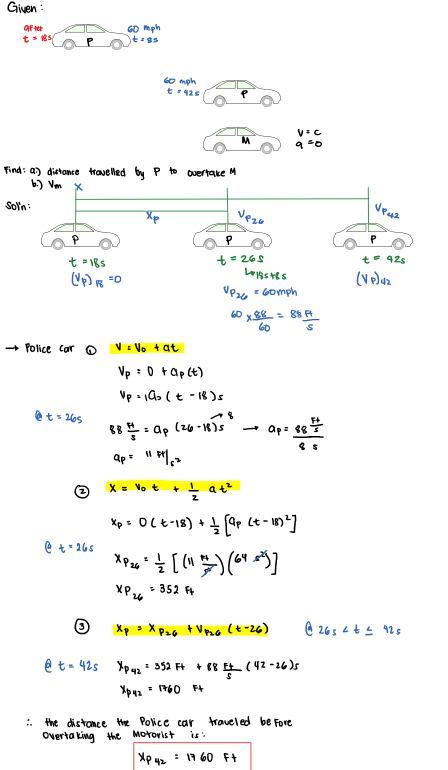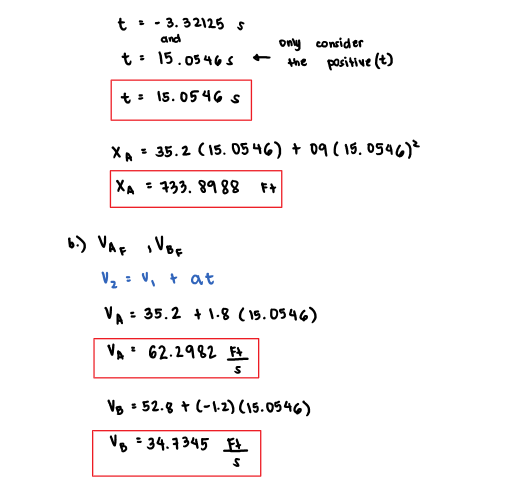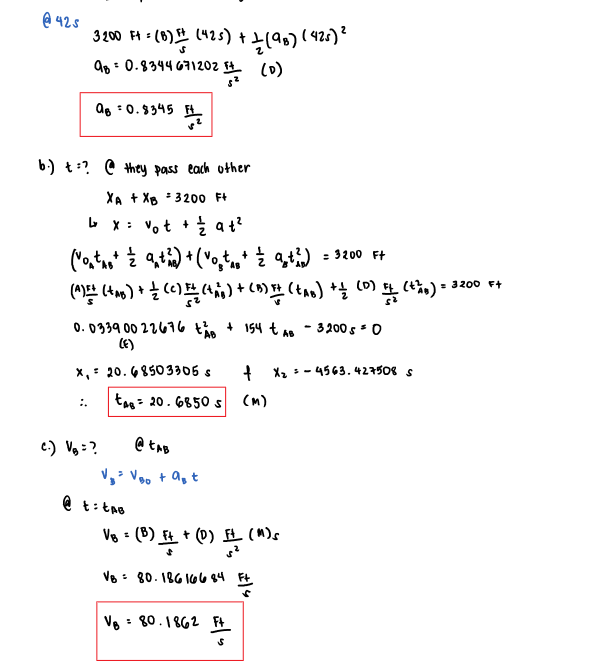- A police officer in a patrol car parked in a 45 mi/h speed zone observes a passing automobile traveling at a slow, constant speed. Believing that the driver of the automobile might be intoxicated, the officer starts his car, accelerates uniformly to 60 mi/h in 8 s, and, maintaining a constant velocity of 60 mi/h, overtakes the motorist 42 s after the automobile passed him. Knowing that 18 s elapsed before the officer began pursuing the motorist, determine (a) the distance the officer traveled before overtaking the motorist, (b) the motorist’s speed


- Automobiles A and B are traveling in adjacent highway lanes and at t = 0 have the positions and speeds shown. Knowing that automobile A has a constant acceleration of 1.8 ft/s2 and that B has a constant deceleration of 1.2 ft/s2, determine (a) when and where A will overtake B, (b) the speed of each automobile at that time.


3. Two automobiles A and B are approaching each other in adjacent highway lanes. At t =0, A and B are 3200 ft apart, their speeds are 𝑣𝐴= 65 mi/h and 𝑣𝐵= 40 mi/h, and they are at points P and Q, respectively. Knowing that A passes point Q 40 s after B was there and that B passes point P 42 s after A was there, determine (a) the uniform accelerations of A and B, (b) when the vehicles pass each other, (c) the speed of B at that time.


4. An elevator is moving upward at a constant speed of 4 m/s. A man standing 10 m above the top of the elevator throws a ball upward with a speed of 3 m/s. Determine (a) when the ball will hit the elevator, (b) where the ball will hit the elevator with respect to the location of the man.
